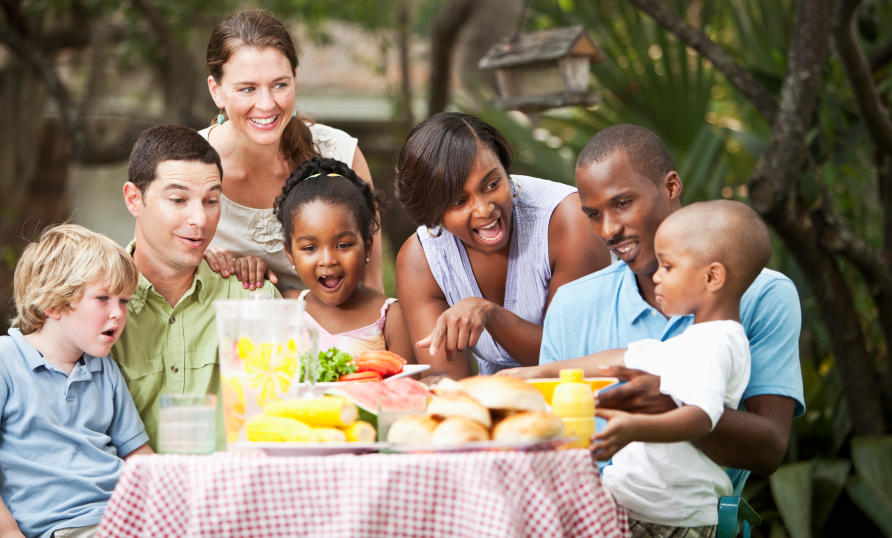Ask a Specialist: Food Safety for Picnics
By Carolyn Washburn | August 10, 2015
Picnics and barbecues provide great outdoor opportunities for food, family, friends and fun. But these hot summer events can also present opportunities for food-borne bacteria to thrive. Consider these reminders to keep your guests safe.
 Keep cold foods cold and hot foods hot. Avoid letting food sit out for more than two hours and only one hour if above 90 F. The danger food zone, where bacteria grow quickly, is between 40 and 140 F. Cold foods should be stored at 40 F or below to prevent the growth of bacteria, and hot foods should be kept hot. Use food coolers with ice or frozen gel packs to keep food cold. To help protect hot foods, wrap them well and place in an insulated container until serving time.
Keep cold foods cold and hot foods hot. Avoid letting food sit out for more than two hours and only one hour if above 90 F. The danger food zone, where bacteria grow quickly, is between 40 and 140 F. Cold foods should be stored at 40 F or below to prevent the growth of bacteria, and hot foods should be kept hot. Use food coolers with ice or frozen gel packs to keep food cold. To help protect hot foods, wrap them well and place in an insulated container until serving time. - Organize your foods. Cross contamination occurs when meat juices contact perishable fresh foods. Organize coolers and refrigerators to avoid juices dripping or mixing with fresh produce. Using separate coolers for perishable foods and canned beverages will prevent cross contamination and also keep perishable foods cooler when the beverage cooler is frequently opened.
- Keep foods in a cool location. Place cooler and bags out of direct sunlight, under tables or in the shade. Avoid opening the cooler more often than needed.
- Keep utensils, plates, table tops and hands clean to avoid cross contamination. If you are not sure if you will have enough water for cleaning, pack cloths and wet towelettes. Food safety begins with proper hand washing, especially in the outdoors. Have hand sanitizer available at picnic areas.
- When grilling, always cook meats to the proper internal temperature of 160 F for ground beef, 145 F for steaks and 165 F for chicken breasts. Use a meat thermometer to check the temperature. If using a marinade with meats, keep in the refrigerator until grilling time and never reuse. Always discard the leftover marinade. Remember to put fully cooked meats on a clean dish using clean utensils to avoid contamination of raw juices and possible bacteria.
- Clean produce. Rinse fresh fruits and vegetables, even those with rinds and skins that are not eaten, under running water before packing them in the cooler. Packaged fruits and vegetables that are labeled “ready to eat” or “washed” do not need to be rewashed.
- When shopping in summer, buy cold foods such as meat and poultry last, right before checkout, and then separate them from other foods in your shopping cart. To guard against cross-contamination, put packages of raw meat and poultry into plastic bags. Plan to drive directly home from the grocery store. You may want to take a cooler with ice for perishables. At home, place meat and poultry in the refrigerator immediately. Freeze poultry and ground meat that won't be used in one or two days; freeze other meat within four to five days.
Make it a habit to use safe food handling and hand washing practices to prevent food-borne illness. When in doubt of the food safety of a product, be safe and throw it out.
By: Carolyn Washburn, Utah State University Extension family and consumer sciences agent
Direct column topics to Julene Reese, Utah State University Extension writer, Logan, Utah, 84322-4900, 435-797-0810, julene.reese@usu.edu.What Next?
Get useful tips like this as soon as we release them. Sign up here.


 Utah 4-H & Youth
Utah 4-H & Youth